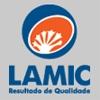Check out what is new in Mycotoxins
Find the best technical articles, forums, and videos on Mycotoxins at Engormix. Enter now and interact with the world's largest agricultural social network.
1. Introduction As a widely cultivated crop and staple food in the world, wheat (Triticum aestivum L.) is crucial for ensuring food security. Unfortunately, its production is limited by many abiotic and biotic stresses. Among biotic stresses, fungal diseases are the most important. Worldwide, one of the most devastating fungal diseases of wheat is Fusarium head blight (FHB) or scab, which is caused by a number of different Fusarium species, but most commonly F. graminearum. FHB...
Comments : 0
Recommendations: 1
Sorghum (Sorghum bicolor) is an important crop for human consumption, animal feed, and bioenergy, and the fifth most important cereal in the world after wheat, rice, maize, and barley. From its domestic origins in Africa, the crop has spread throughout the world and now is cultivated on all inhabited continents. In Thailand, sorghum is grown in all regions of the country, but most commonly in the central and northeastern regions. Much of the sorghum grown in Thailand is exported, although...
Comments : 0
Recommendations: 0
1. Introduction Food safety is a pervasive concern of both the general public and of government authorities worldwide. Yet the insidious nature of mycotoxin contamination of key foods is frequently overlooked. Fungi are often found on crops growing in the field or in storage. Food-borne fungi are capable of producing hundreds of secondary metabolites but only a relative few are regulated, due to their adverse effects on human and animal health [1–3]. These metabolites...
Comments : 0
Recommendations: 2
1. Introduction Fusarium head blight (FHB) is a global disease affecting small grain cereals including wheat, barley and oat [1–4] The disease is caused by several Fusarium species of which Fusarium graminearum Schwabe is the primary etiological agent in wheat crops in Canada based on the frequency of isolation and impact on grain yield and quality [5–8]. In addition to a reduction in yield, F. graminearum produces the type B trichothecene mycotoxins, deoxynivalenol...
Comments : 0
Recommendations: 0
The corn harvest is later than it has been any time in recent memory, and the prolonged moist conditions are conducive for molds to develop on grain in the field. Over the past few days we have received numerous reports of ear rots developing in the field and questions concerning mycotoxin production when conditions are cool but wet. Cladosporium ear rot Apart from Fusarium, Gibberella and Diplodia ear rots, we are starting to see and hear of more reports of Cladosporium...
Comments : 1
Recommendations: 0
...
Comments : 4
Recommendations: 0
1. Introduction Mycotoxins are toxic compounds produced as secondary metabolites by certain groups of fungi during their growth in food and feed products, which can lead to several toxic effects in animals and humans [1]. The most important fungal genera that produce mycotoxins are Aspergillus, Penicillium and Fusarium, and the main classes of mycotoxins produced by these genera are the aflatoxins (AF), ochratoxin A (OTA), fumonisins (FB), deoxynivalenol (DON) and zearalenone...
Comments : 0
Recommendations: 0
1. Introduction Mycotoxins are low molecular weight compounds produced as secondary metabolites by filamentous fungi contaminating crops in the field or warehouses when environmental conditions of temperature and humidity are adequate. These metabolites have no biochemical relevance to fungal growth or development, and they constitute a chemically and toxicologically heterogeneous group, which are together only because they can cause diseases, including death, to human beings...
Comments : 1
Recommendations: 0
1. Introduction The Food and Agriculture Organization of the United Nations (FAO) estimated that 25% of the cereal production is contaminated by mycotoxins [1]. Aflatoxin B 1 (AFB 1 )—the major secondary metabolite of Aspergillus flavus, A. parasiticus, and A. nomius—has adverse effects on humans and animals that result in health disorders and economic losses. To avoid these harmful effects, many physical, chemical, and biological decontamination...
Comments : 0
Recommendations: 0
1. Introduction Mycotoxins are secondary toxic metabolites produced by filamentous fungi which, even at low concentrations, represent an important danger for both animal and human health [1,2]. Currently, over 300 mycotoxins have been identified worldwide, being aflatoxins, ochratoxins, zearalenone, trichothecenes, and fumonisins, the most frequently found with synergistic toxic effects reported when more than one of these mycotoxins are present in the feed [3,4]. Mycotoxins are...
Comments : 1
Recommendations: 0
1 Introduction Mycotoxins are secondary products of fungal metabolism, with a high capacity to cause damage to human and animal health (Bennett & Klich, 2003). Fungi can naturally proliferate in food and are very commonly found in grains used for animal and human food. The growth is mainly favored by humidity and temperature. Inadequate harvesting and storage practices contribute to fungal contamination (Batatinha et al., 2008). The presence of fungi in...
Comments : 0
Recommendations: 0
.mp4&w=3840&q=75)
Join Carlton and Clint for a brief discussion around Myco 5-in-1 PLUS - VICAM's answer to global grain and feed producers and handlers who are impacted by the need to monitor more than one mycotoxin in a non-laboratory testing environment. Then, watch the procedure from start to finish ...
Comments : 0
Recommendations: 1
Credit picture: by BorgQueen
by University of Chemistry and Technology Prague
Mycotoxins are a group of low-molecular-weight compounds with a...
Comments : 1
Recommendations: 2
The purple race of Zea mays L. is a native plant from America. It was one of the main foodstuffs of indigenous peoples in the pre-Columbian era, and several medicinal properties have been attributed to it; hence its industrial and export potential. Chemical components of the purple maize are essences, salicylic acid, fats, resins, saponins, potassium and sodium salts, sulfur and phosphorus, and especially phenolic compounds (ARROYO et al., 2007). Mycotoxins are toxic secondary...
Comments : 0
Recommendations: 1
Introduction Mycotoxins are toxic secondary metabolites produced by some filamentous fungi that grow naturally in many commodities around the world [1,2]. In Brazil, contamination of substrates by mycotoxigenic fungi is rather common, since climatic conditions favor their development and the production of mycotoxins. These substances are chiefly produced by three fungal genera: Aspergillus, Penicillium and Fusarium [3]. Of these, the genus Fusarium is of great importance for it...
Comments : 0
Recommendations: 0
...
Comments : 0
Recommendations: 1
INTRODUCTION The Food and Agriculture Organization (FAO) forecasts that the human population will increase by 30% by 2050 (FAO, 2019) with corresponding increase in demand for food. Animal protein, the largest component of human food is entirely dependent on livestock production channels as its source. Over 70% of the cost of livestock production is feed, and the second largest component and cost of feed is the crude protein, a segment that has been challenged for its...
Comments : 0
Recommendations: 0
Introduction The gastrointestinal (GI) tract of humans and animals is populated with a diverse group of microbes known as the microbiota that include bacteria, fungi, archaea, protists, and viruses, with bacteria being the most predominant [1, 2]. The bacterial microbiota is well known to be critically involved in host physiology and immune development [1, 2]; however, the role of the fungal community, known as the mycobiota, that plays in health and diseases is less studied and...
Comments : 0
Recommendations: 0
1. Introduction Mycotoxin studies have been gaining prominence since the second half of the 20th century, and deoxynivalenol (DON) or vomitoxin (H 15 O 20 O 6 , Figure 1) is among the most well-known among these toxins [1]. In its physical form DON form colorless fine needles, it is soluble in polar organic solvents and water and its melting point is 151–153 °C [2]. DON belongs to the class of trichothecenes and causes nausea, vomiting,...
Comments : 0
Recommendations: 0
Introduction There has been interest in the utilization of actively growing natural microorganisms for the competitive exclusion of toxigenic fungal species or by using their naturally produced metabolites for inhibiting the germination and growth of these pathogens that cause diseases of humans and contaminate food and feed (Dogi et al. 2013; Faheem et al. 2015; Guo et al. 2011). A key driver is the strict legislative limits, which exist in many countries for mycotoxins in a...
Comments : 0
Recommendations: 0


_1.jpg&w=3840&q=75)





















